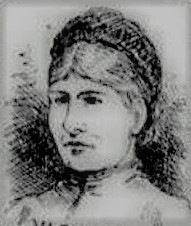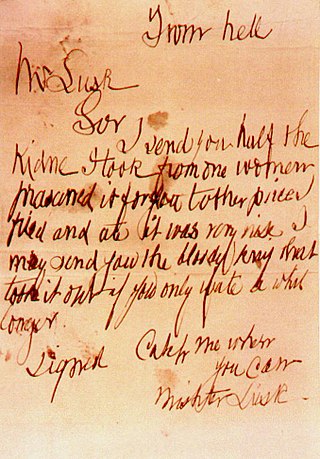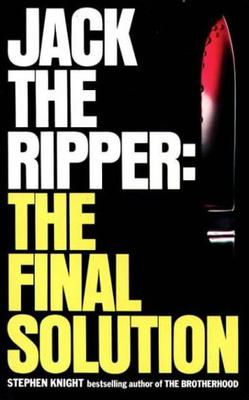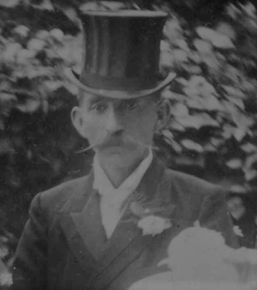Related Research Articles

Annie Chapman was the second canonical victim of the notorious unidentified serial killer Jack the Ripper, who killed and mutilated a minimum of five women in the Whitechapel and Spitalfields districts of London from late August to early November 1888.

Mary Ann Nichols, known as Polly Nichols, was the first canonical victim of the unidentified serial killer known as Jack the Ripper, who is believed to have murdered and mutilated at least five women in and around the Whitechapel district of London from late August to early November 1888.

Emma Elizabeth Smith was a murder victim of mysterious origins in late-19th century London. Her killing was the first of the Whitechapel murders, and it is possible she was a victim of the serial killer known as Jack the Ripper, though this is considered unlikely by most modern authors.

A series of murders that took place in the East End of London from August to November 1888 was blamed on an unidentified assailant who was nicknamed Jack the Ripper. Since then, the identity of the killer has been widely debated, with over 100 suspects named. Though many theories have been advanced, experts find none widely persuasive, and some are hardly taken seriously at all.

The "From Hell" letter was a letter sent with half of a preserved human kidney to George Lusk, the chairman of the Whitechapel Vigilance Committee, in October 1888. The author of this letter claimed to be the unidentified serial killer known as Jack the Ripper, who had murdered and mutilated at least four women in the Whitechapel and Spitalfields districts of London in the two months prior to Lusk receiving this letter, and whose vigilance committee Lusk led in civilian efforts to assist the police in identifying and apprehending the perpetrator.

Mary Jane Kelly, also known as Marie Jeanette Kelly, Fair Emma, Ginger, Dark Mary and Black Mary, is widely believed by scholars to have been the final victim of the notorious unidentified serial killer Jack the Ripper, who murdered at least five women in the Whitechapel and Spitalfields districts of London from late August to early November 1888. At the time of Kelly's death, she was approximately 25 years old, working as a prostitute and living in relative poverty.

Elizabeth "Long Liz" Stride is believed to have been the third victim of the unidentified serial killer known as Jack the Ripper, who killed and mutilated at least five women in the Whitechapel and Spitalfields districts of London from late August to early November 1888.

Jack the Ripper: The Final Solution is a book written by Stephen Knight first published in 1976. It proposed a solution to five murders in Victorian London that were blamed on an unidentified serial killer known as "Jack the Ripper".

Catherine Eddowes was the fourth of the canonical five victims of the notorious unidentified serial killer known as Jack the Ripper, who is believed to have killed and mutilated a minimum of five women in the Whitechapel and Spitalfields districts of London from late August to early November 1888.

Martha Tabram was an English woman killed in a spate of violent murders in and around the Whitechapel district of East London between 1888 and 1891. She may have been the first victim of the unidentified serial killer Jack the Ripper.

Thomas Neill Cream, also known as the Lambeth Poisoner, was a Scottish-Canadian medical doctor and serial killer who poisoned his victims with strychnine. Cream murdered up to ten people in three countries, targeting mostly lower-class women, sex workers and pregnant women seeking abortions. He was convicted and sentenced to death, and was hanged on 15 November 1892.
Aaron Kosminski was a Polish barber, hairdresser, and suspect in the Jack the Ripper case.

Montague John Druitt was an English barrister and educator who is known for being a suspect in the Jack the Ripper murders of 1888.

Francis Tumblety was an Irish-born American medical quack who earned a small fortune posing as an "Indian Herb" doctor throughout the United States and Canada. He was an eccentric self-promoter and was often in trouble with the law. He has been put forward as a suspect for the notorious and unsolved Jack the Ripper murder spree in Whitechapel, London, in 1888.

Jack the Ripper was an unidentified serial killer active in and around the impoverished Whitechapel district of London, England, in 1888. In both criminal case files and the contemporaneous journalistic accounts, the killer was also called the Whitechapel Murderer and Leather Apron.

The Whitechapel murders were committed in or near the impoverished Whitechapel district in the East End of London between 3 April 1888 and 13 February 1891. At various points some or all of these eleven unsolved murders of women have been ascribed to the notorious unidentified serial killer known as Jack the Ripper.

Joseph Lawende was a Polish-born British cigarette salesman who is believed to have witnessed serial killer Jack the Ripper in the company of his fourth victim, Catherine Eddowes, approximately nine minutes before the discovery of her body on 30 September 1888.

The Goulston Street graffito was a sentence written on a wall beside a clue in the 1888 Whitechapel murders investigation. It has been transcribed as variations on the sentence "The Juwes are the men that will not be blamed for nothing". The meaning of the graffito, and its possible connection to the crimes attributed to Jack the Ripper, have been debated for over a century.
The Thames Torso Murders, often called the Thames Mysteries or the Embankment Murders, were a sequence of unsolved murders of women occurring in London, England from 1887 to 1889. The series included four incidents which were filed as belonging to the same series. None of the cases were solved, and only one of the four victims was identified. In addition, other murders of a similar kind, taking place between 1873 and 1902, have also been associated with the same murder series.
James Thomas Sadler, also named Saddler in some sources, was an English merchant sailor who worked as both a machinist and stoker. In 1891, the then-53-year-old was accused of killing prostitute Frances Coles. Sadler was placed under arrest, and a mob almost lynched him at the exit of a police station. Eventually, he was dismissed by police for having a solid alibi, and obtained compensation from a newspaper that had branded him as Jack the Ripper.
References
- ↑ City of London Police's Crime Museum Archived November 4, 2009, at the Wayback Machine
- ↑ London Walks Jack the Ripper Tour
- ↑ List of TV, movie, and documentary credits at IMDB.com
- ↑ "Railway Murders". UKTV, 3DD Productions. 2 May 2021.
- ↑ "Penguin book author's biography". Archived from the original on 6 July 2008. Retrieved 31 January 2010.